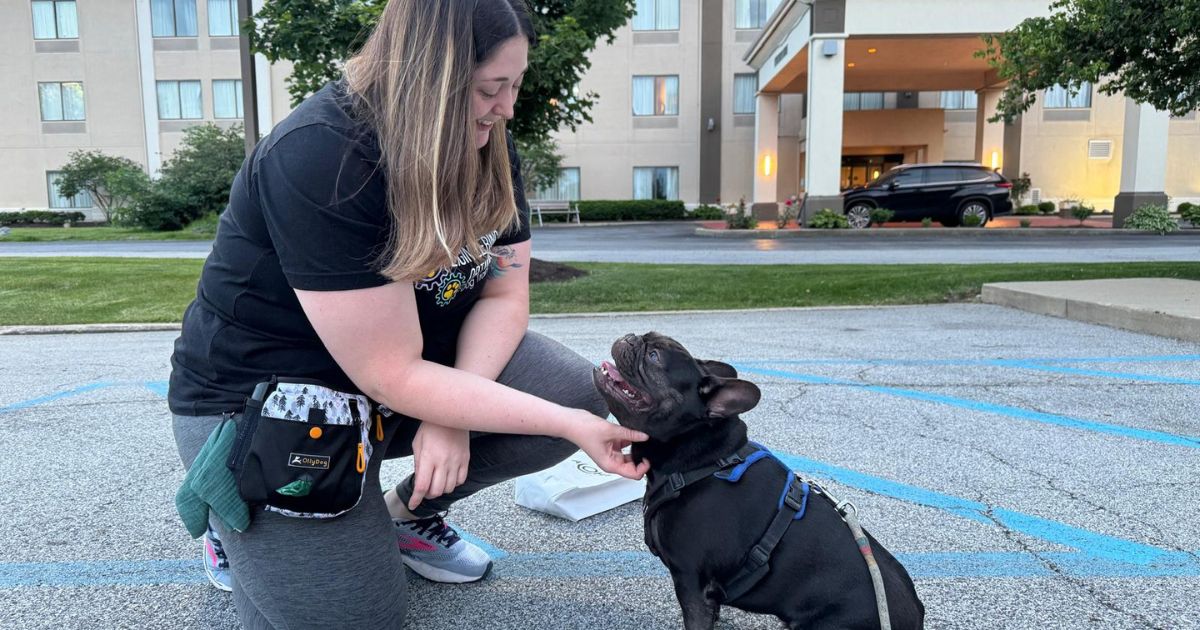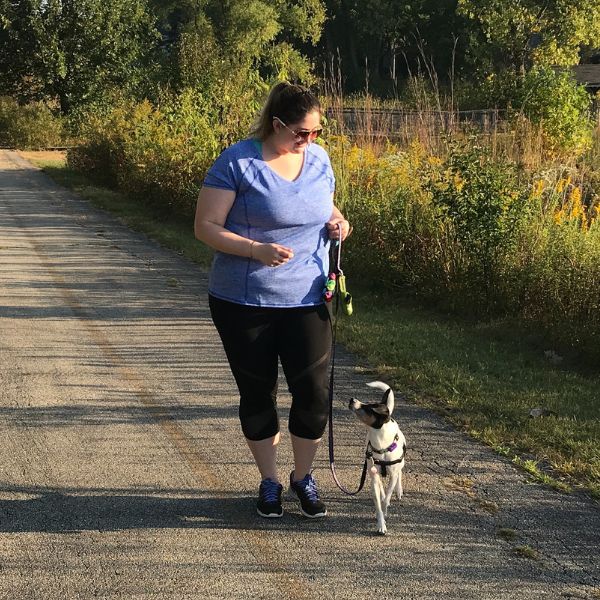
It’s no secret that small dogs are, well, smaller. We often place them in a category of their own, apart from larger dogs, but small dogs and large dogs are the same species, so the same concepts apply. There are some special considerations that we might make with small dogs since their size does sometimes put them at a disadvantage in a world that is much larger than they are. Here are some things we can do to help make up for their size difference and empower them to have independence, choice, and predictability:
Increase Accessibility
Ramps/Stairs
Add ramps or stairs to furniture to make it more accessible to your small dog. This will reduce the risk of injury from jumping and help your little dog navigate their environment more easily. This is a great recommendation for dogs of all sizes since the need for these things might increase with age. It’s also better to introduce them early, so you can build the habit of using ramps and stairs before it is needed due to old age, disease, or injury.
When looking for pet ramps or stairs, remember that many pet products are designed for the human eye, making them less usable for our pets. Be sure to look at the following aspects to ensure they are suitable for your dog:
- Angle and steepness of the product
- Width of the step or ramp
- Material that provides grip to prevent slips, trips, and falls
- Overall sturdiness
- Railings to prevent improper use
Train While Sitting Down
Not only will this save your back, but it will also reduce the need for your small dog to look up, reducing strain on their neck and spine. Remember to also practice the skills you teach while sitting at your dog’s level in other positions, such as sitting in a chair and/or standing, if you expect your dog to be able to perform them from that position.
If sitting at your dog’s level is something that is not accessible to you, try elevating your dog by having them on the couch or your bed for training.
Increase Predictability
Make Handling & Care Positive
It’s best to be proactive and work on teaching our small dogs to feel comfortable with handling and care before it is needed. Even if we have not prepared for a particular situation, we can take a considerate approach to make that situation a more positive experience for our small dog. The more positive experiences you invest in this, the better it will be for your dog long term. It doesn’t have to be complicated either! Below are some really easy ideas to help:
Adding a Cue to Picking Your Dog Up
Add a consistent verbal cue before picking your dog up and reward them afterwards. For example, I use the verbal cue “going up.” This provides them a level of predictability of what will happen and helps keep the experience positive. Small dogs are undoubtedly picked up a lot throughout their lives – make it a rewarding lifelong experience!
If your dog doesn’t enjoy being picked up, you might consider teaching them to hop in a bag or carrier to be lifted up. You might also opt for a harness with a handle that requires less physical manipulation.
Putting on Gear
Instead of leaning over your dog to put on their walking gear, teach them to come to an elevated station. This reduces both your need to bend down and the amount of spatial pressure your small dog will experience. Teaching your dog to place their front two paws up can also help access their undercarriage for buckling the harness. For example, we use the armrest of the couch in my house. Whatever you use, the station should always be rewarded generously.
If you’re headed straight out your door, you might pre-attach your leash to your dog’s harness so you have one less step before heading out. This can make a world of difference for handling sensitive dogs.
Increase Comfort
Walking Gear
The leash and harness you use with a small dog can make a big difference. Small dogs are more prone to tracheal collapse, so a Y-shaped harness can help alleviate stress on that area. Plus, a 9-10 foot lead makes up for the height difference between you and your small dog and will allow your dog to move more comfortably and freely.
In addition to the length of your leash, consider the size and weight of the leash hardware. Many leashes for small dogs have very large clasps that are bulky as they bounce against your dog’s back. Instead, look for a smaller clasp that is more size-appropriate.
You should consider the weight of your leash itself. Opt for a thinner biothane, leather, or webbing so it’s light and not clunky for you and your dog when walking.
Bath Time
For small dogs, you can take advantage of using a sink instead of the tub to elevate your dog so you don’t have to bend down as much. Alternatively, you might also opt to use a baby bath. Regardless of what you use, add a grippy surface like a bath mat cut to the appropriate size to help your dog feel like they have secure footing. To make bath time positive, use a suction cup lick mat loaded up with a high-value treat – greek yogurt and powdered peanut butter is a favorite in our house.
Increase Communication
Learning dog body language is vital to living a harmonious life with any dog, but even more so for small dogs. Small dogs are more easily manipulated than larger dogs, but doing so can often be to their detriment. By picking up a small dog, we remove their ability to move and act freely. If we are in tune with when our dog is communicating discomfort, we can better recognize and respond in those moments.
By taking these small steps, you can make a big impact in your small dog’s life to increase their accessibility, predictability, comfort, and communication. This will empower your small dog to have independence, choice, and predictability since their size sometimes puts them at a disadvantage in a world that is much larger than they are. To learn more from Mallory about empowering small dogs, enroll in her upcoming LIVE class, Don’t Sweat the Small Dog.
Note: This article was originally published on 04/11/2025. We regularly review our content to ensure that the principles and techniques remain valuable and relevant. However, best practices continue to evolve. If you notice anything that may need updating, please feel free to contact us at editor@clickertraining.com.

